On holiday in Lyon last month, my husband and I were strolling the Parc de la Tête d’Or, watching geese preen themselves by the lakes and walking off the fuzz of three days of good French wine. We turned a corner and did a double take – three giraffes were poking their heads over the foliage! We’d stumbled upon an old fashioned city zoo, home to a menagerie of wild animals, including big cats and, I kid you not, a bear. The animals were living in depressingly small, barren enclosures, clearly privileging human entertainment over any serious attempt to recreate natural environments. I’d never pay to attend and support a zoo like this, but because it was free and integrated into the park, we were forced unintentionally into the role of spectators. I became a participant in this shitty zoo, and it made me sick to my stomach. Of course, not all zoos are like the one in Lyon – the modern zoo prides itself on putting conservation first and playing a key role in saving endangered species from extinction. So why do these places inevitably make me feel, well… not warm and fuzzy, but something more akin to shame?
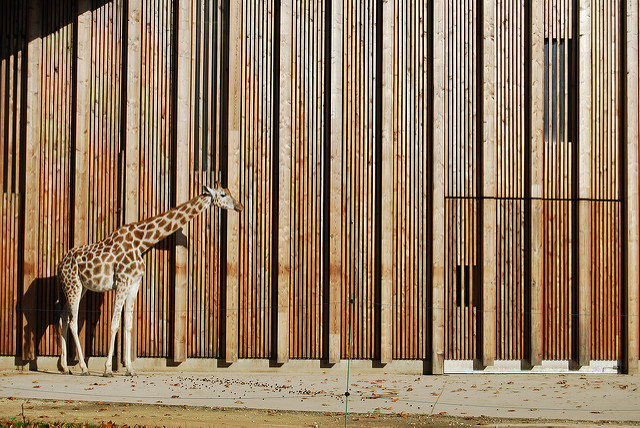
The first ever Zoological Garden, the precursor of modern zoos, opened in London in 1828. Now, according to the Association of Zoos and Aquariums (AZA), there are more than 10,000 zoos around the world, holding more than 10,000 different species. In its 2015 Annual Report on Conservation Science, the AZA noted that zoos spent over 186 million dollars on field conservation projects in over 120 countries, benefitting more than 700 species, 227 of which listed as endangered or threatened under the Endangered Species Act. In this sense, there are obvious reasons and benefits to captive breeding programmes. It is largely human activity that has destroyed the natural habitats of these animals, so aren’t we obligated to help save them?
For children, zoos are often the only place where they will see a real living animal that isn’t a pet, and of course this can be a magical experience. I grew up a regular visitor to Paignton Zoo, now branded an ‘environmental park’, and it was one of the best sorts of conservation zoos. It was also where I had my first ever ‘date’, on a Year 7 school trip, but that’s not the only reason I associate zoos with disappointment… Despite the large enclosures, the enrichment schemes that allowed the giraffes to ‘forage’ for their food, the money put back into conservation, there were certain parts of that zoo that never felt quite right. The chimpanzees gazing blankly out at my classmates who ignored the warnings and banged loudly on the glass. The tiger pacing up and down the wire fence, up and down, up and down. Tigers don’t pace in the wild; they run, taking great bounding strides as they chase and kill their prey through dense vegetation, covering up to 400 miles to reach tiger populations in other areas. Are those Paignton tigers better off for having their food caught for them, a reliable meal presented to them like clockwork? Maybe. Or maybe they’re dying of boredom.
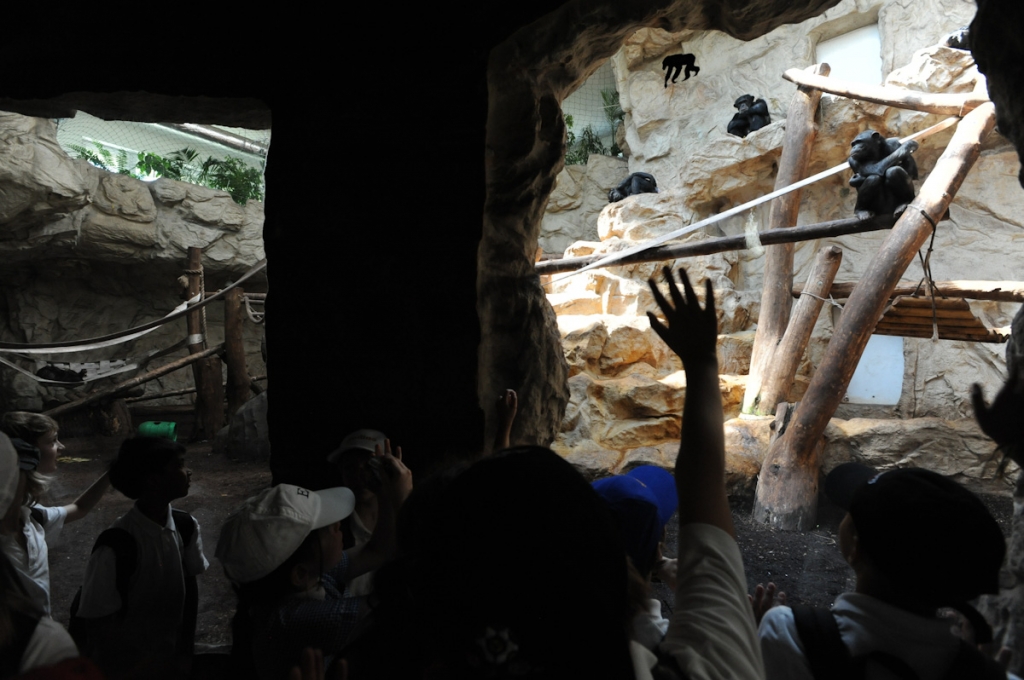
Chimpanzees at Warsaw Zoo, 2012. Image by Jo-Anne McArthur / WeAnimals
Can zoos ever really offer wild animals humane care?
“Ask a dozen zoo directors why these places should exist today and you’ll get a different answer every time. Education, conservation and science all come up. But the most common answer – fostering empathy for animals – is becoming harder to do while providing humane care to these animals.” (Justin Worland in Time)
As is evident in the behaviour of my Paignton tigers, when compared with the spaces they inhabit in the wild and the range of behaviours they are able to express, animals on display in zoos suffer huge losses of freedom. Numerous studies have shown that many animal species are far more intelligent than previously understood, and give new insights into how they may suffer from anxiety and depression when they are removed from nature. So if we acknowledge that wild animals suffer when they’re confined, it becomes increasingly difficult to claim that they experience high levels of welfare in captivity. Even renowned zoo designer Jon Coe (known globally for his ‘immersive’ zoo design) acknowledges that “Even the best zoos today are based on captivity and coercion. To me, that’s the fundamental flaw.” Polar bears have an average home range of 80,000 square kilometres, and are often kept in enclosures one-millionth of the size of this. Animals like this exhibit repetitive behaviours called stereotypies when kept in captivity, correlated with higher levels of stress and coined ‘zoochosis’ by Born Free’s Bill Travers. They pace back and forth, self-mutilate, bite the bars of their cages for hours, even eat their own vomit. For elephants, zoo managers and welfare researchers have concluded that the optimal size for an elephant zoo enclosure is 0.005 square kilometres. Their natural home range is 1500-3700 square kilometres. Unsurprisingly almost two-thirds of elephants in captivity develop stereotypies.
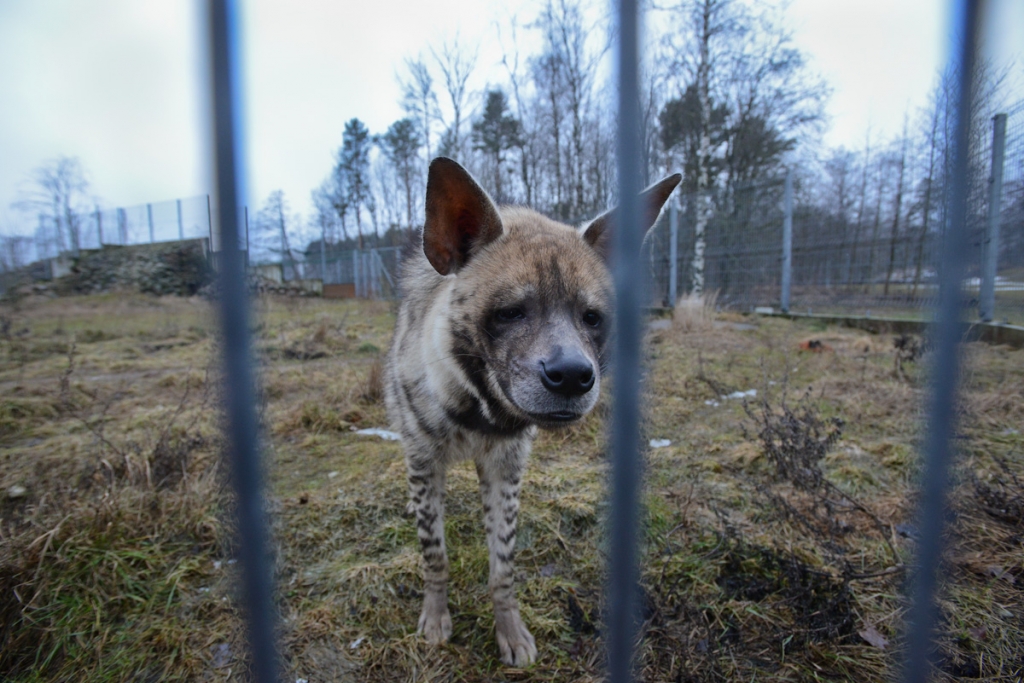
Hyena in European Zoo, 2015. Image by Jo-Anne McArthur / WeAnimals
My discomfort in watching my classmates ‘interacting’ with the primates wasn’t unfounded. Just being watched can be stressful to animals. A recent study explored the ‘visitor effects’ on penguins and found that after exposure to visitors the birds showed increased aggression, vigilance and avoidance behaviours like huddling.
Welfare problems in zoos are generally described in terms of management not ethics: the broader morality of keeping wild animals in captivity is not addressed. However, in his book The Welfare Ark ethicist Koen Margodt states that zoos present themselves as arks in which animals are collected to be ‘saved’ from extinction, but where in actuality human interests are put before those of individual animals. In reality, it’s very hard to ensure high welfare standards in zoos, not least because animal welfare science itself was developed in the context of agriculture and cannot be transferred neatly over to the zoological context. Rather than focusing on the short-term productivity of animals, zoos aim to keep animals healthy over long lives, and optimise their quality of life (one hopes). Yet we know very little about the thousands of different species of exotic animals compared with our domestic ones, and as a result not all species can be managed in evidence-based, optimised ways. Life span is a measurement of good welfare in zoos, but just because an animal lives longer than it would in the wild, that doesn’t mean his or her life is ‘better’. Animals in zoos develop the same diseases humans do when we are overfed and under-exercised. Maggie, an obese and lonely elephant in the Alaska Zoo, had a treadmill built for her which she refused to use. Aged zoo animals may appear healthy but suffer from chronic health conditions like painful osteoarthritis, and these conditions often go unnoticed by zoo staff.
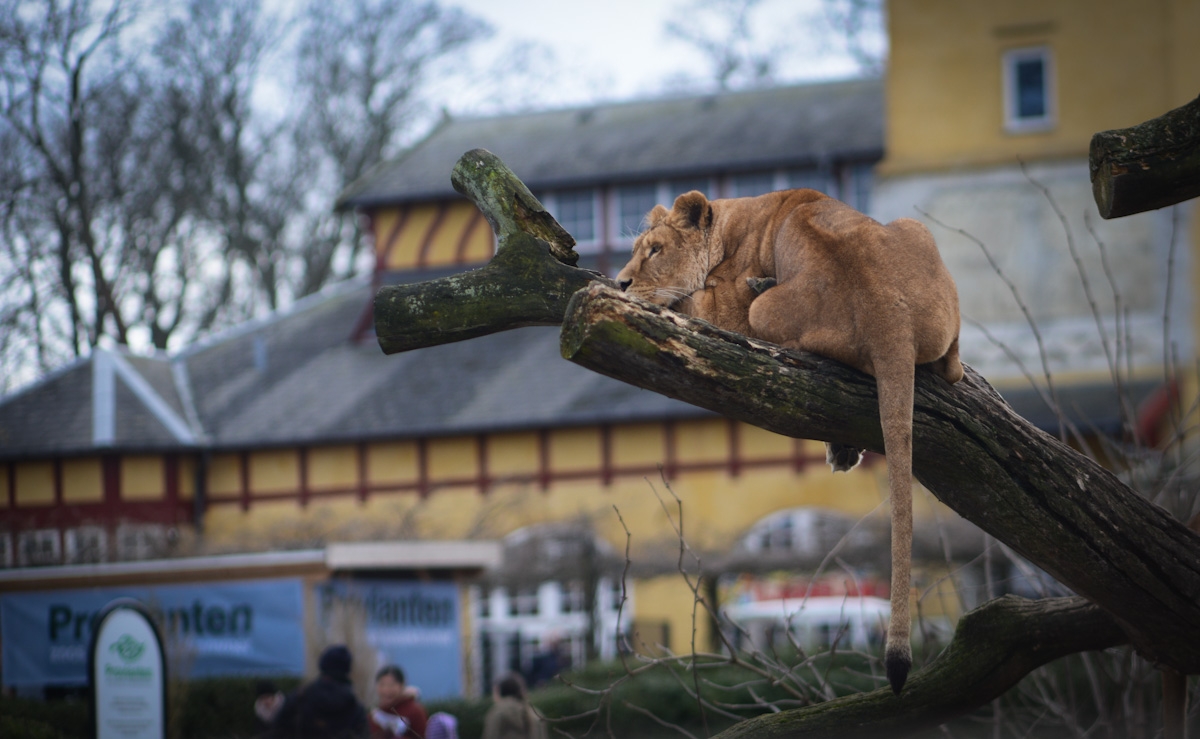
Lioness, Copenhagen Zoo 2015. Image by Jo-Anne McArthur / WeAnimals
Of course there are benefits of conserving a species through zoo efforts – but these must be weighed up against the suffering in captivity of the individual animals in that species.
Births, deaths and musical semen
In zoos, fertile animals are considered healthy and not overly stressed – a successful breeding program suggests good welfare, and it allows a zoo to build the ‘captive gene pool’ of a given species, which can then be used to further replicate animals. They can then profit from selling animals or their semen to other zoos, or live breeding their animals with another zoo’s animals. Julie Woodyer of Zoocheck Canada calls this “musical semen”. However, all this often leads to too much breeding in too little space. Animals from genetic lines that have bred well over the past years are declared ‘surplus’ and killed to prevent in-breeding within the captive breeding program (what ethologist Marc Bekoff terms ‘zoothanaesia’). Does anyone remember the news story of Copenhagen Zoo’s Marius the giraffe? The death of this healthy 18-month-old giraffe, considered useless for breeding because his genes were too common, was followed by his dissection in front of a large crowd of people, including children.
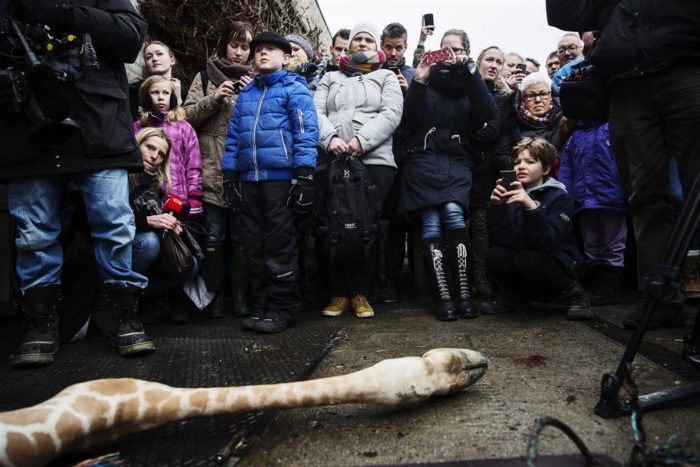
Tackling this problem isn’t straightforward. Some zoos make sure that ‘surplus’ animals are not born in the first place, making active use of contraceptives or hormones, whereas others kill them as they reach maturity. The former, practised more often in American zoos, would seem most humane, but this deprives animals of their most basic natural behaviours: giving birth and raising young. European zoos more often allow animals to mate and bear offspring as compensation for depriving them of their other natural behaviours. Director of Conservation at Copenhagen Zoo, Bengt Holst, states “If we take away their parenting behaviour, they would not have much left”. Once the young reach the age at which they would become independent in the wild, they are removed and normally killed. Animal photographer Jo-Anne McArthur, whose pictures I’ve used in this blog, muses:
It’s interesting with zooed animals, who are on display in plain sight, and yet we fail to really see them. We see them as ambassadors of a species, perhaps, but rarely as individuals… Killing someone shows you don’t give a stuff about them as an individual. And yet, it’s “funny”, zoos do a lot of marketing of their new babies, giving them a name, “Come see so-and-so!” etc. Zoos profit off this personalization of animals, and claim they care so much about the animals in their custody. With Marius and the thousands of other “surplus” animals, killing them tells another story. It says “we don’t care at all about any of the individuals here at the zoo.”
Are zoos really prioritising conservation and education?
Another justification for zoos is their educational value, and certainly the stated reason for my Year 7 ‘date’. Yet there is actually very little evidence that zoos are educational: research presented in An Introduction to Zoo Biology and Management shows that the amount of time people spend looking at each animal exhibit is thirty seconds and few actually read the placards (I certainly didn’t). If education was truly the motivation for zoos, it could be argued that people would learn far more from a well-produced nature documentary; just look at the impact Blue Planet has had on people’s use of single-use plastics. The Sea Life London Aquarium uses CGI or ‘augmented reality’ to allow visitors to ‘meet’ a polar bear and her cub or watch a whale splashing nearby.
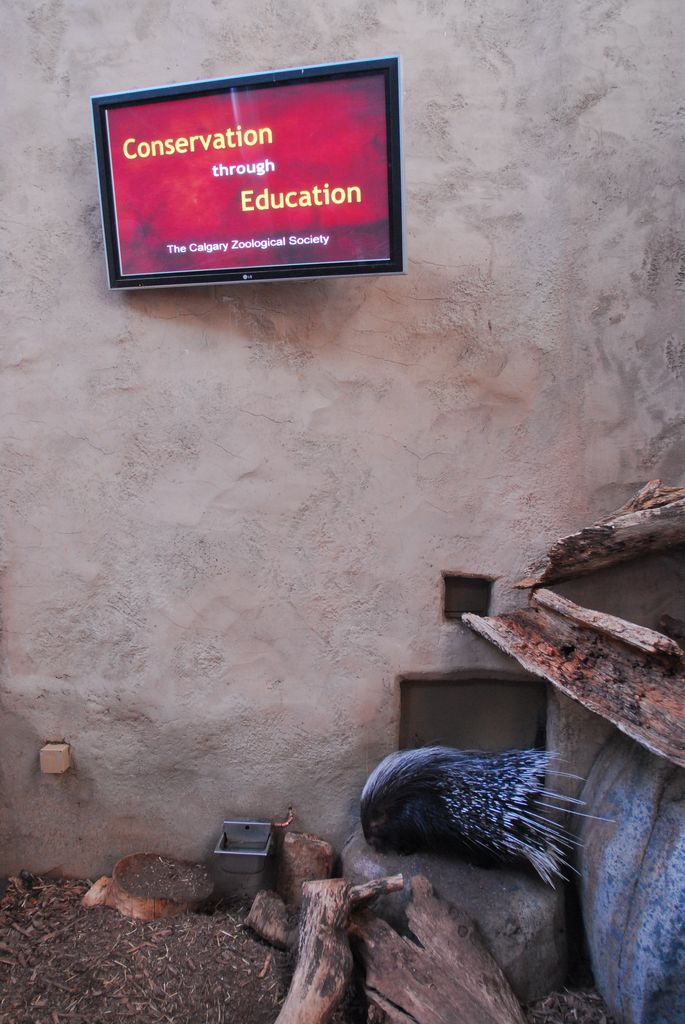
Image by Jo-Anne McArthur / WeAnimals
The conservation argument doesn’t hold with all captive animals: most wild orca populations are not listed as endangered, for instance. However, when threatened, injured animals are taken into captivity and provided with lifesaving care, zoos and aquariums must surely be justified – this is how Morgan, a female orca, ended up at Loro Parque Zoo in Tenerife after being rescued. Yet Morgan is now pregnant. Impregnating an orca in a captive setting, knowing that the new-born will never join a pod or swim a mile in a day, seems irresponsible. In this way, many zoos sadly profess a commitment to conservation as a way to raise money and public support without actually engaging in meaningful conservation work.
What if we really made zoos conservation centres, not entertainment?
Animals who are vulnerable in the wild are often also vulnerable in captivity, so surely the focus should be on trying to keep them safe in their wild homes, that is, preserving habitats. Yet the sad fact is that due to human destruction of these natural habitats, zoos could easily end up as ‘refugee camps’ for animals. In which case, as Bekoff summarises in his book The Animals’ Agenda:
“The notion of selling tickets so people can come through and gawk at the refugees would be recognised for what it is: an insult to the dignity of those who have lost everything”.
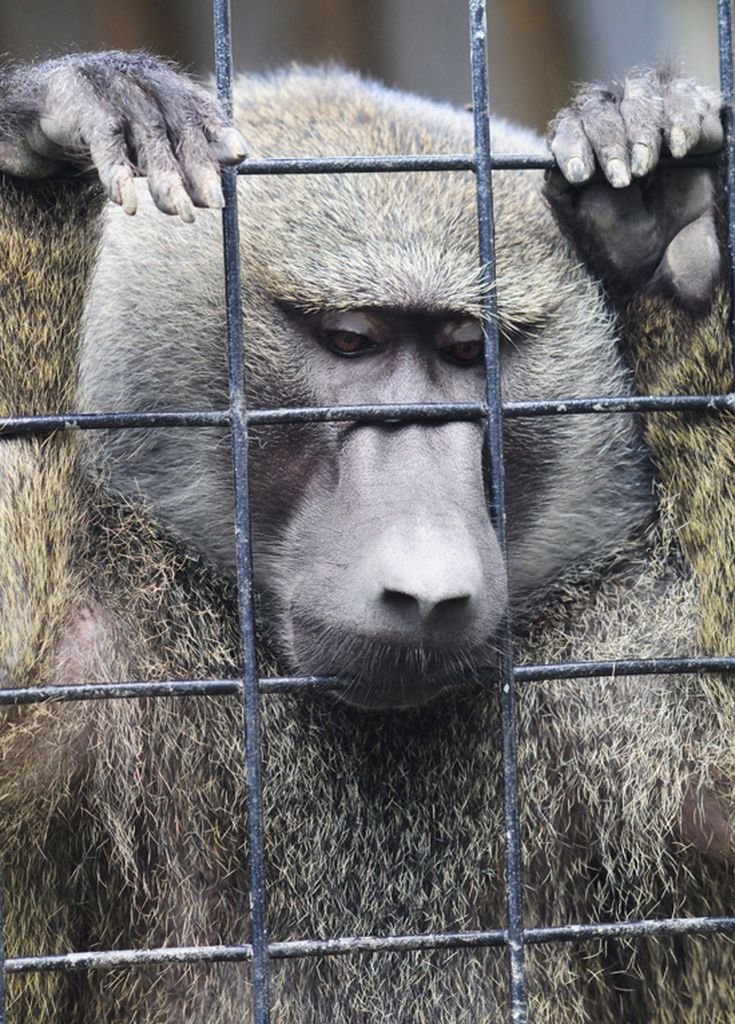
Image by Jo-Anne McArthur / WeAnimals
Similarly, animal ethicist Peter Singer says “There are legitimate arguments for retaining some species of animals in captivity. That doesn’t mean that people have to go and look at them”. Can a zoo ever really be both conservation centre and entertainment? It seems unavoidable that compromises must be made to welfare for the sake of visitor experience. Perhaps we should only be exhibiting animals that do well in captivity (reptiles, sloths) and keep the more vulnerable species hidden from view; indeed, a number of zoos have closed their elephant exhibits with no resulting decrease in zoo attendance.
Enrichment – a different type of zoo?
Recently, modern zoos are becoming more conscious of the mental and social requirements of animals when designing zoo exhibits. Comparative cognition and applied behaviour analysis has been used to determine appropriate breeding partners, reduce aggression in chimpanzees, improve exhibit design for primates, and reduce anxiety-related behaviour in polar bears. Giving bears more dry land area and visual access beyond their enclosure have been shown to reduce pacing. At Brookfield Zoo in Chicago the red panda exhibit is built around a giant ‘magic tree’, where steel cups semi-randomly emerge from knotholes, sometimes containing food and sometimes not (just like nature). Animals are getting more of a chance to express ‘agency’, to engage actively with their environment to gather knowledge and enhance skills. It has been suggested that zoo animals must have the freedom to exert control over their quality of life, and have freedom from boredom.
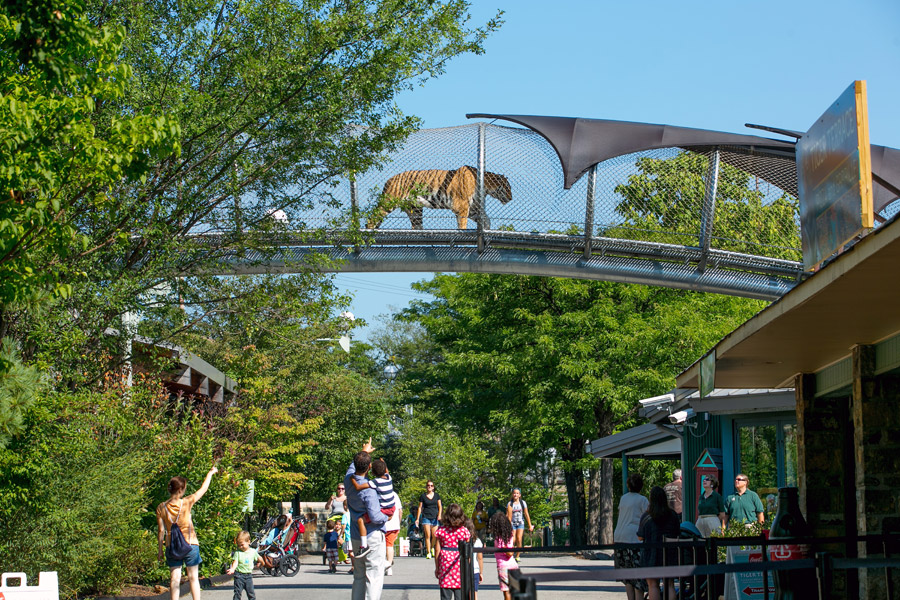
Zoo360 at Philadelphia Zoo
Mike Clifford, who works with zoos at GLMV Architecture, as ‘curator of innovation’, thinks the future of zoos lies in fostering human-animal connections. GLMV has tried to do this in Wichita, Kansas, where visitors to the Sedgwick County Zoo can now ride in a boat to see the elephants in a 5-acre exhibit. The boat ride breaks down the barrier between animals and people while giving the elephants room to roam freely. Jon Coe, the designer at Philadelphia, believes that the top zoos will evolve into something he calls the ‘unzoo’, turning upside down the traditional approach of bringing animals to humans. The unzoo gives animals space to roam and brings the humans into their environment. Coe’s Zoo360 initiative has used this principle to change the way humans and animals experience Philadelphia Zoo, where zookeepers also demonstrate the intelligence of pigeons, rats and cockroaches by putting them through tests in front of visitors. There is certainly an argument for keeping more adaptive animals like this in zoos – deer and coyotes, for instance, thrive anywhere, and sedentary animals like sloths and koalas are also more suited to captivity. Animals like flamingos will also experience good welfare if they are kept in natural social groups. Yet of course these aren’t necessarily the animals most in need of conservation.
Sadly, very little financial support is actually provided for the kind of facilities described above, and not every zoo has the space or budget to meet guidelines on enrichment. In San Francisco, Seattle and Chicago, zoos have given up on keeping elephants entirely. Ultimately zoos are fundamentally conservative institutions, many having been around for more than a century, investing heavily in captive breeding. The people who run them are slow to make changes: journalist Justin Worland writes
“Most of the zoo officials I talked to acknowledged some concerns about the future – but many were also reluctant to embrace dramatic shifts like the unzoo. Indeed, some in the field have already criticized Zoo360 as outlandish, calling it a lot of hype without substantially changing the exhibit”.
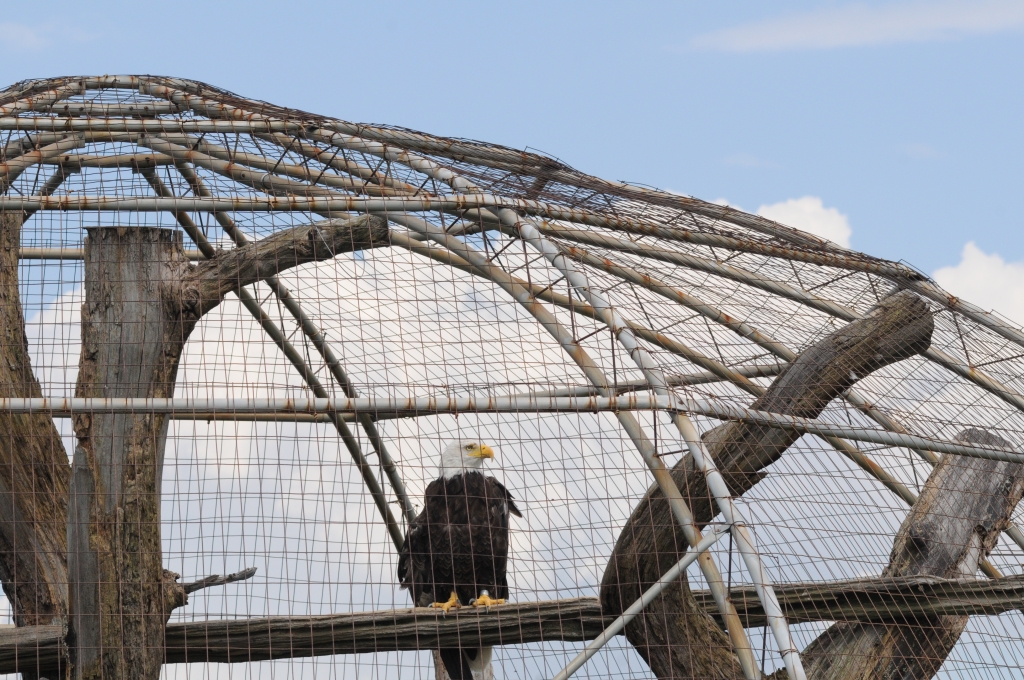
Bald Eagle, Canada, 2008. Image by Jo-Anne McArthur/ WeAnimals
So what next?
Because of the damage we are wrecking on our planet, there will always be a need for places where we can care for those animals who can’t be reintroduced into the wild. I do believe that zoos have potential to do good if they have the financial resources to ‘unzoo’ the traditional set-up, and employ expert zookeepers who love animals. I publish books for veterinarians in my day job, and the zoo vets I’ve spoken with care passionately for the inhabitants, even when they have to make the most challenging ethical decisions. What is clear is that there is no longer any place for zoos like the one in Lyon: given what we know about animal intelligence and behaviour, we also know that our most vulnerable species deserve far better. If I have children, of course I want them to experience real animal interactions, but I don’t believe such interactions happen at traditional zoos. I don’t want my children to know animals as depressed prisoners held for our entertainment, I want them to admire them as wild, proud, magnificent and free. In that respect, watching a wildlife documentary might just be the more authentic experience.
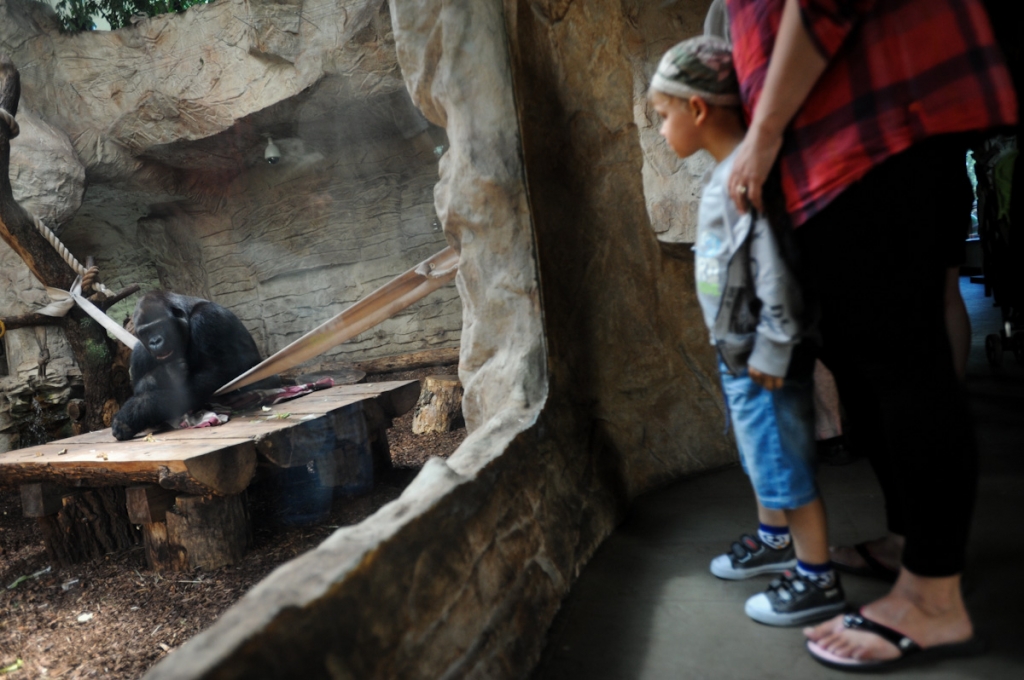
Gorilla, Warsaw Zoo 2012. Image by Jo-Anne McArthur, WeAnimals
